12 Slab on grade The slab which is cast on the surface of the earth is called a Ground slab Generally, slab on grade is classified into three types 1 Slab on ground It is the simplest type of slab on grade which is a composite of stiffening beams constructed from concrete around perimeter of the slab, and has a slab thickness of 100mmA Slab on grade Concrete slab supported directly on foundation soil b Ligh t loads Loads which consist of (compa rabl e) forklift axle load of 5 kips or less and stationary live loads less than 400 po unds per square foot c Heavy loads Loads which consist of any on e of the following moving live loads exceeding aA slab foundation only requires you to level the ground your home will be sitting on and pour the floor of your house This reduces the carbon cost of your home to 1/3 rd of a basement
What Are The Spacing Of Reinforcement Bar In A Suspended Slab 6mx4m Quora
What is a suspended slab
What is a suspended slab-Re Foundations Floating Slab vs Slab on Grade From info@builderswebsourcecom Category Foundations and Basements Remote Name Date Time 09 PM Comments You ask about the cost differences between a floating slab and a slab on gradeINSULATION AND AIR / VAPOUR BARRIER FOR SLAB ON GRADE https//wwwecohomenet/guides/2280/slabongradeconstructionstepby



What Are The Spacing Of Reinforcement Bar In A Suspended Slab 6mx4m Quora
Slabsongrade, also known as floating slab, refers to concrete slabs that are directly laid on the ground over a prepared surface To prevent groundwater bitumen from entering the slab from the earth, a layer of gravel and bitumen is first laid on the earth These slabs are popular in areas where ground freezing is not an issueOn the other hand, when a concrete slab ranging from 150mm to 300mm thick is designed in such a way that it forms part of ground floor / slab carrying only uniformly distributed load from the ground floor and not covering the entire footprint of the building, then it is called and specified as a slabongrade or a non suspended slabFor design of slabsonground, with the exception of highway and airport pavements, parking lots, and mat foundations 122 ACI Committee 302develops recommendations for construction of slabonground and suspendedslab floors for industrial, commercial, and institutional buildings ACI 3021R provides guidelines and recommendations on
Responses (4) Mike Reynolds Dec 13, 19, 1124 am A slab on grade literally means a slab of concrete on grade (ground level), as opposed to 'below grade' like a basement And a slab on grade can be built in a variety of ways (On the other hand, when a concrete slab ranging from 150mm to 300mm thick is designed in such a way that it forms part of ground floor / slab carrying only uniformly distributed load from the ground floor and not covering the entire footprint of the building, then it is called and specified as a slabongrade or a non suspended slabThe slab on grade can be installed on the virgin ground, a layer of stone or porous material, etc A slab on grade does not have any voids below it and can be as thin as 4 inches The design of the slab on grade is engineered by the structural engineer If there are concerns regarding the ability of the earth to support the slab on grade, the
Here are my 5 most important things to check when inspecting a suspended concrete slab 1 Reinforcement at Maximum Moment At the most basic level, you are checking that the reinforcement is placed in the suspended slab in accordance with the design engineer's plans That is the minimum standard and you should be aiming for better than that Levelness tolerances apply only to slabsongrade and suspended slabs that are shored when tested Levelness tolerances do not apply to sloped or cambered floors ACI 117 sets the Minimum Local values at 60% of the Specified Overall values, unless specified otherwise The Minimum Local values are the minimum tolerances for the floor to be usableThe slab The dried out slab provides a comfortable indoor climate that is mold and mildew free The Easy Way to Build SlabonGrade LEGALETT is a very simple slab to install compared to other types of slabongrade foundation designs Other designs use a thickened edge slab system, requiring complex form work LEGALETT uses a very simple




Cross Laminated Timber Flooring And Concrete Slab Flooring A Comparative Study Of Structural Design Economic And Environmental Consequences Sciencedirect




5 1 7 Fill Below Floors Nhbc Standards 21 Nhbc Standards 21
Often times we are designing slabs as structural slabs even though they are on grade (either due to void form requirements, or backspanning of backfill, etc) Typically, these slabs will be between 612" thick For a 68" slab they are often #4#5 bars @ 12" oc centered in slab For 1012" slabs we typically go with a double mat of #5 @ 12" oc A concrete slab on grade works well on relatively level sites with a first floor (or basement) level that will be relatively close to existing grade Since fill will need to be imported into the house footprint to bring the grade up to the underside of the slab, floors that will be high off the ground are not logical candidates for a slab onSlabongrade FPSFs can be installed with one placement of concrete, eliminating multiple inspections and speeding construction time The method may also be used effectively with walkout basements by insulating the foundation on the downhill side of the house Frost protected shallow foundations are also useful for remodeling projects because



Chelsea Quebec Maple Ridge Media Residence Project Profile Legalett Canada
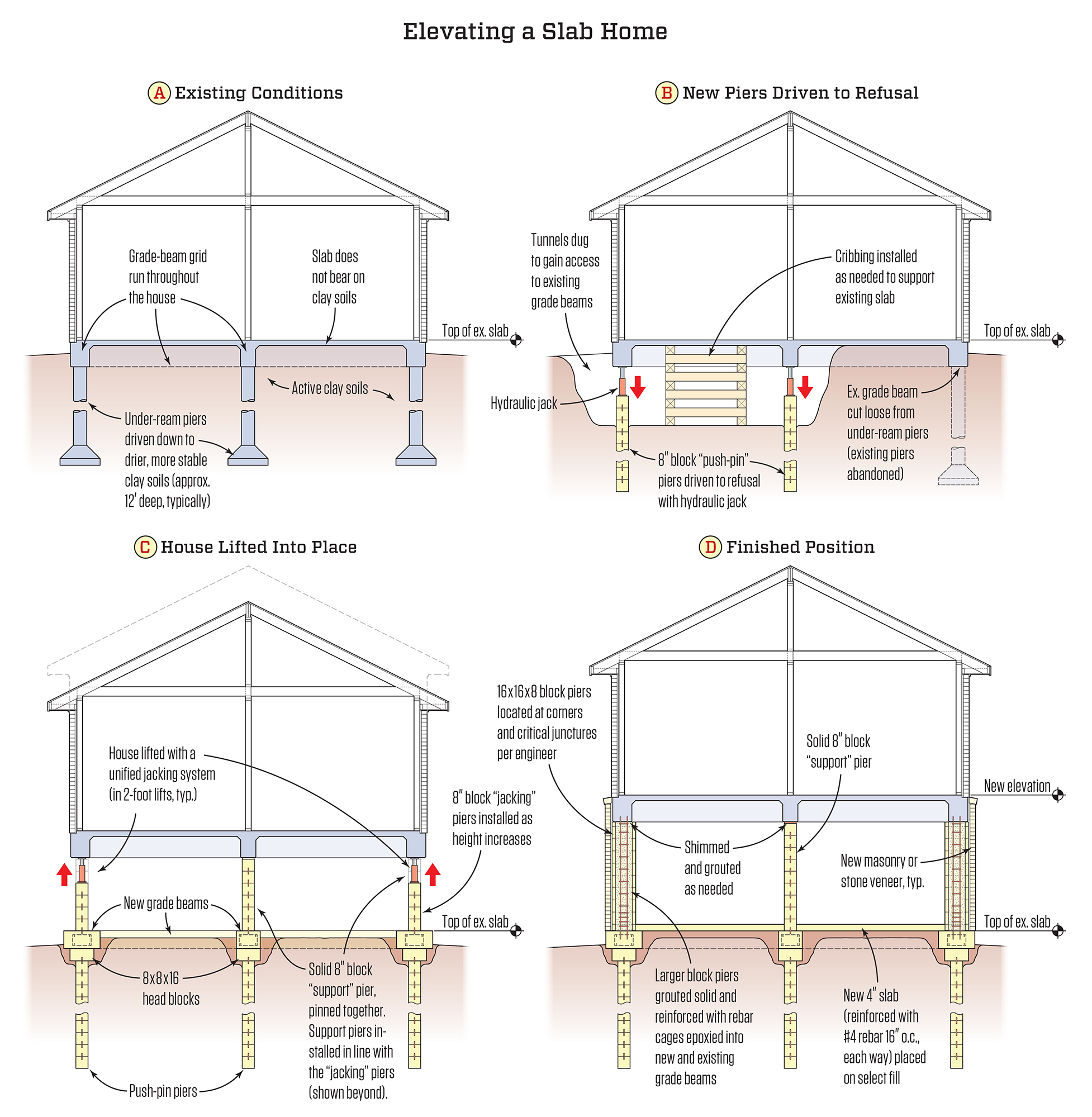



Lifting Slab On Grade Homes Jlc Online
Suspended Concrete Slab Suspended concrete slab is referred to a cement slab that is not in contact with the ground This type of concrete slab construction requires different concrete slab design from the one we normally see that is cast on the ground The most common application of suspended slab in residential construction is used at garage floor where below the garage floor This is one of the types of concrete slabs Grads Slab/ Slab on grade The slab which is cast on the surface of the earth is called a Ground slab This type of slab is used on the Basement floor There are two types of Grade slabs Usually after casting Plinth beams Sand is filled at a height of 015m and then Sand level is rammedB Ch 5 Slabs on Grade "the purpose of isolation joints in slabs on grade is to allow horizontal and vertical movement between the slab and adjoining structures such as walls, columns, footings, or specially loaded areas (machinery bases) The movements of these structural elements are likely different than those of a slabongrade due to




Concrete Slab Wikipedia



Monolithic Slab Suspended Slab Cement Slab
This video explain about the significant difference between the concrete slab on grade and suspended slabIt enumerates the function, and the important thingThe subgrade is the ground on which the floor is built The subbase is an optional layer located on top of the subgrade and beneath the slab bottom (see Figure 1) The subbase, while not mandatory, can provide added benefits to the construction and performance of the slab It is vital to consider subgrade preparation The primary difference between these two slab foundation types is the way in which the concrete is poured A monolithic foundation is poured all at once, a seamless slab anywhere from 4 – 12 inches thick Monolithic slabs with a uniform thickness are often used for patios or carports For more robust construction projects (like that of a residence), concrete grade beams



What Are The Spacing Of Reinforcement Bar In A Suspended Slab 6mx4m Quora




10 Different Types Of Slabs In Construction Where To Use Youtube
Slab on Grade is a very simple idea Instead of digging down and emptying an average of 3 cement trucks to pour a basement foundation footing, floor, and walls;Slab is one foot or less below grade • R‐10 insulation required, extending – 2 feet below grade for climate zones 4 and 5 – 4 feet below grade for climate zone 6 • Insulation should extend downward from the top of the slab (with two options to reduce slab edge insulation R‐value) A suspended slab (or structural slab) spans between supports and must be reinforced to resist bending moments calculated from statics based on the magnitude of load and span There are one way slabs, two way slabs, waffle slabs, flat plates, flat slabs and many other slab types A floor is the surface we walk on
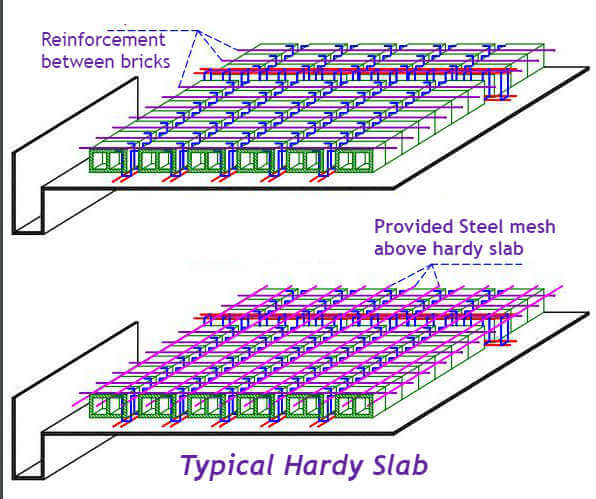



16 Different Types Of Slabs In Construction Where To Use




Monolithic Definition Monolithic Footing Monolithic Slab Foundation Advantages Disadvantages Of Monolithic Slab Foundation Monolithic Slab
An 8inch slab or thicker is required for CJ's spaced up to feet In ACI 360 Section 613 – Sawcut contraction joints, the term "unreinforced" refers to both plain concrete and concrete reinforced for crack control only (ie not for flexural strength) Slabs, suspended or on grade, put out more heat (50 BTUs/ sq ft) than systems within floor joists (35 BTUs sq ft) However, wellinsulated residential structures need only 25 BTUs sq ft to maintain comfortable temperatures at zero degrees F, so either arrangement will provide sufficient heat In laymen's terms, yes Many people use the terms Slabongrade &




Method Statement For Construction Method Statement Non Suspended Slab
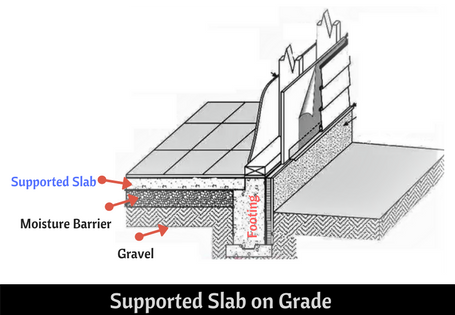



Slab On Grade Or Grade Slab Types Construction Procedure
Slab on ground is the preferred option on a flat site due to speed and economies A suspended timber floor on bearer's and joist's can sometime's be comparable cost wise on a flat site but is better suited if there's quite a bit to significant fall on the site Suspended slab may be the most expensive compared to the other'sThe slabs will not have grade beams but will be a "uniform thickness" throughout the slab of about 10 inches Suspended Slab A foundation design that uses carton forms, or a uniform thickness slab raised with jacksSlabs on grade adequate strength at the joints This allows the designer to maintain a constant slab depth without thickening at joints or edges Thickened edges add more restraint to drying shrinkage and cost more Add confidence The presence of rebar or WWF in a slab on grade increases confidence in the ability of the slab to



Q Tbn And9gcq6ob2k Yzbf7n4tu5occpqes2eempog8grsfmsjtis4rzrkmp8 Usqp Cau
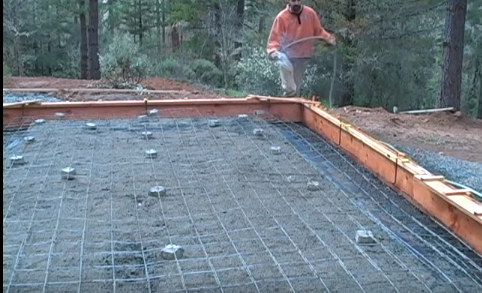



Slab On Grade Or Grade Slab Types Construction Procedure
When slabs on ground are polished, nonuniform exposure of aggregate is a result of high spots cause by slab curling Deflection of many suspended slabs exceeds the upward movement at curled slabs A A structurally reinforced slabonground uses a composite of concrete and structural steel to support the design load Structural steel may be rebar or WWF The crosssectional area of the steel is inserted into engineering formulae found in ACI 318 to determine the load carrying capacity for a given slab design In a structural concrete slab, the thickness of the slab is not a factor in determining the load carrying capacity of that slabIn contrast to this, a concrete slab would need to have all the airconditioning ductwork suspended underneath the slab, and then a false ceiling suspended under that The end result might be a significantly deeper floor zone, which will impinge on the ceiling height in the rooms below
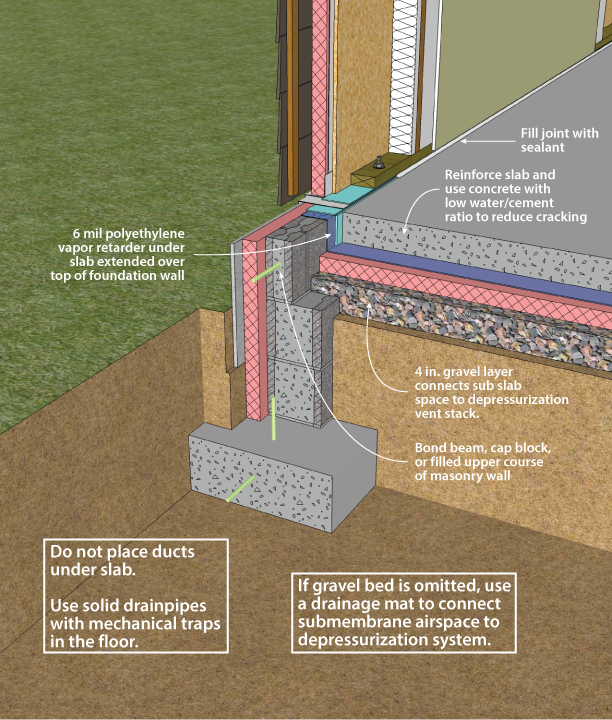



Doe Building Foundations Section 4 1
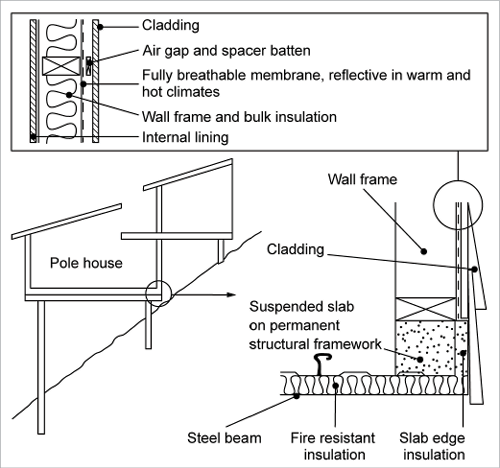



Concrete Slab Floors Yourhome
Concrete slab thickness = x 2 10 x 4 5 = 105 mm This the theoretical requirement for the thickness of the slab However, as calculated, reinforcements can not be placed as precisely as calculate to maintain the gap between the bars as aggregate size 5 Further, slab reinforcement will be obstructed by the beam reinforcement, andWith some limitations, reinforcement for slabs can be sized using the Subgrade Drag Theory in order to increase the spacing of control or construction joints The result is a lightly reinforced slab designed to offset the effects of temperature and shrinkage of the concrete ACI 360, "Design of SlabsonGrade", refers to this as a Type B slabThe CUPOLEX® floor slab can be fully suspended on reinforced concrete piles Additional reinforced internal ribs are used in the slab by Additional reinforced internal ribs are used in the slab by introducing PONTEX ® , the structural CUPOLEX ® accessory to provide a structure capable of spanning between stem walls or piles
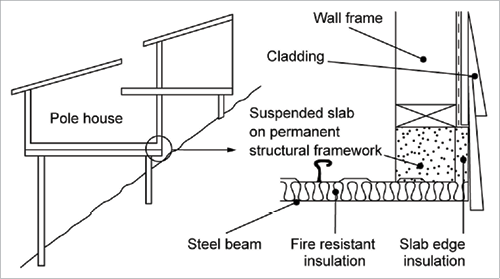



Concrete Slab Floors Yourhome
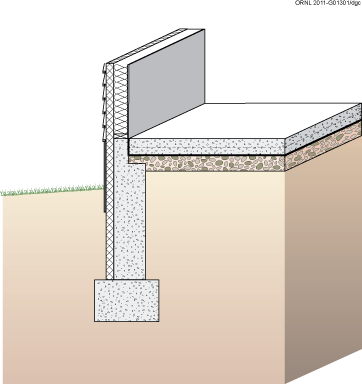



Doe Building Foundations Section 4 1
If the suspended slab is expected to conform to ACI , Specification for Tolerances for Concrete Construction and Materials, there are only a few relevant tolerances Section 441 indicates that deviation from the specified elevation is ±3/4 inch, but that's only applicable on formed suspended slabs before the removal of shores These soil improvements will allow to support the structure My concern was regarding recommendations for the floor slab slabongrade vs suspended slab After saw those test pits, as you suggested, a suspended slab should be recommended However, we might need to explore other options for a possible slabongrade recommendationAdvantages of Slab Foundations Disadvantages of Slab Foundations Labor, excavation and forming costs are lower since the concrete slab is built on grade over undisturbed soil All normal systems and duct work including heating, ventilation and air conditioning will have limited access
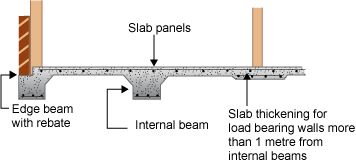



Raft Slab Vs Waffle Slab Innohomes
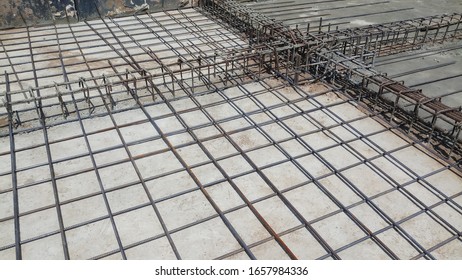



Slab On Grade High Res Stock Images Shutterstock
The Slab on Grade appears to be the more cost effective solution, but only by a margin of approximately 10% I admit there many, many more factors to consider than I present in this article Factors such as the depth of expansive soils, the magnitude soil's expansiveness and the local costs of importing suitable fill material could easily shift our results one way or the otherSuspended slabs are made of concrete and steel mesh, the same as a ground slab They are normally prefabricated offsite, and transported by truck Some slabs have hollow channels running through them these 'hollow core slabs' are used to help reduce weight, and also to allow cabling and piping to be run through the slab A slabongrade is a type of shallow foundation in which a concrete slab rests directly on the ground below it A slabongrade foundation usually consists of a thin layer of concrete across the entire area of the foundation with thickened footings at the edges or below load bearing walls in the middle of the building
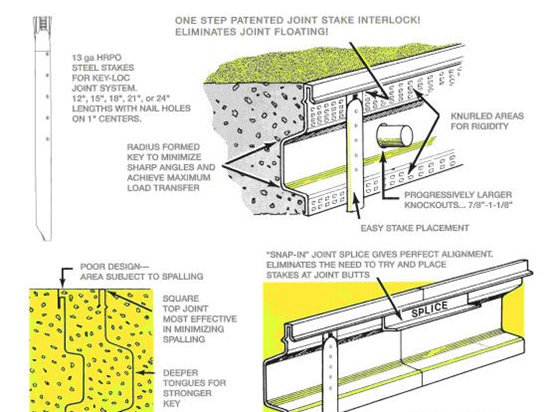



Construction Joints In Concrete Slabs The Concrete Network




Difference Between One Way Slab And Two Way Slab One Way Slab Vs Two Way Slab
Just because slabongrade foundations aren't used as frequently doesn't mean they can't work if designed properly Concrete slabs are literally poured "ongrade", on top of a prepared bed of sand, gravel, insulation, or a combination of these There are three types of slab systems Monolithic A monolith in nature is a solid stone structure The term monolithic is usedA slabongrade foundation—also known as a floating slab foundation—is a structural engineering practice in which the concrete slab that will serve as the foundation for a building or other structure is formed from a mold that is set into the ground The concrete is then poured directly into the mold, leaving no space between the ground andBuilding a floating slab is one of the most economical ways of constructing a foundationTraditional foundations include a strip foundation using a frost wall above The strip footing is installed below the frost level, typically 4′0″ below gradeThe cost of a strip footing and frost wall is a lot higher because there are more excavation, concrete, and labour required




Suspended Floors All You Need To Know Thermohouse
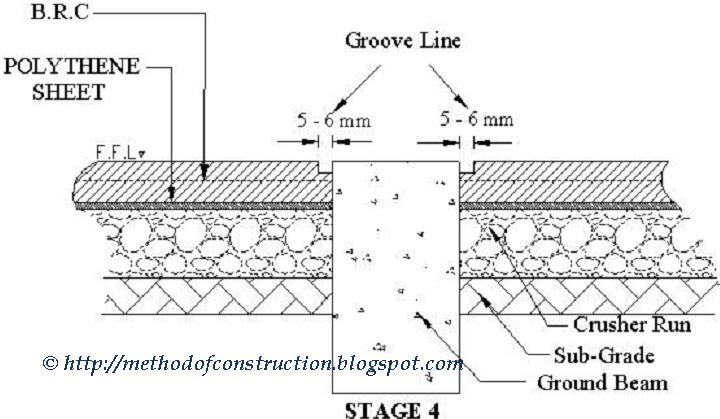



Method Statement For Construction Method Statement Non Suspended Slab
i am trying to decide on slab on grade vs basement for TOTAL cost While i know SOG is cheaper than basement, i can do 750 sq ft on top of 750 sq ft basement with finishing in two years after concrete dries vs about 10 sq feet with SOG to accomodate our total needs So my question is is a 750 sq ft house on top of 750 ft basement cheaperFloating Slab interchangeably However, architects, engineers, and construction workers may have a more refined interpretation Slab Foundations Slab foundations are the most common type of home foundation In most suburban communities slabs are used due to their simple, fast, and cheap construction You may also hear a slab foundation referred to as a slab on grade foundation Creating a slab foundation isn't as simple as pouring concrete into forms




What Is A Raft Slab Why The Best Structural Engineers Prefer Raft Slabs



What Are The Spacing Of Reinforcement Bar In A Suspended Slab 6mx4m Quora
A slab is also a preferred method for keeping out mice, rats and other critters Unlike a crawl space, a concrete slab has limited space for foreign elements to enter Slab construction is generally less expensive to heat and cool, and it's easy to enter a house with a slab The house only requires one or two steps Disadvantages of a
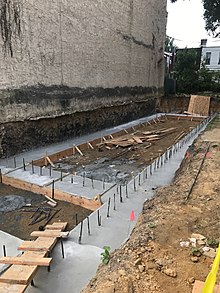



Concrete Slab Wikipedia




The Challenge With Slab On Grade Get The Most Out Of Your Gpr Data Gssi Geophysical Survey Systems Inc




14 Slab On Grade Design In Steel Factory Youtube




Concrete Slab Or A Timber Joisted Floor Which Is Best Partridge




Raised Foundations Vs Slab Foundations Homes Ibuild Kit Homes Granny Flats And Modular Homes




Concrete Slab Floor Construction Branz Renovate




Ground Level Concrete Slab Subfloor Build




3 Most Common House Foundations The Pros Cons Reinbrecht Homes




Method Statement For Construction Method Statement Non Suspended Slab




Concrete Slab In Construction Its Functions Types



1
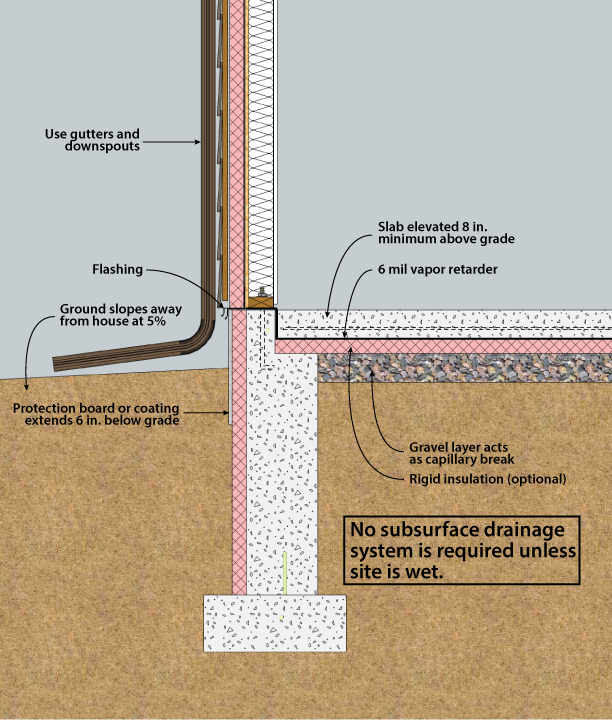



Doe Building Foundations Section 4 1
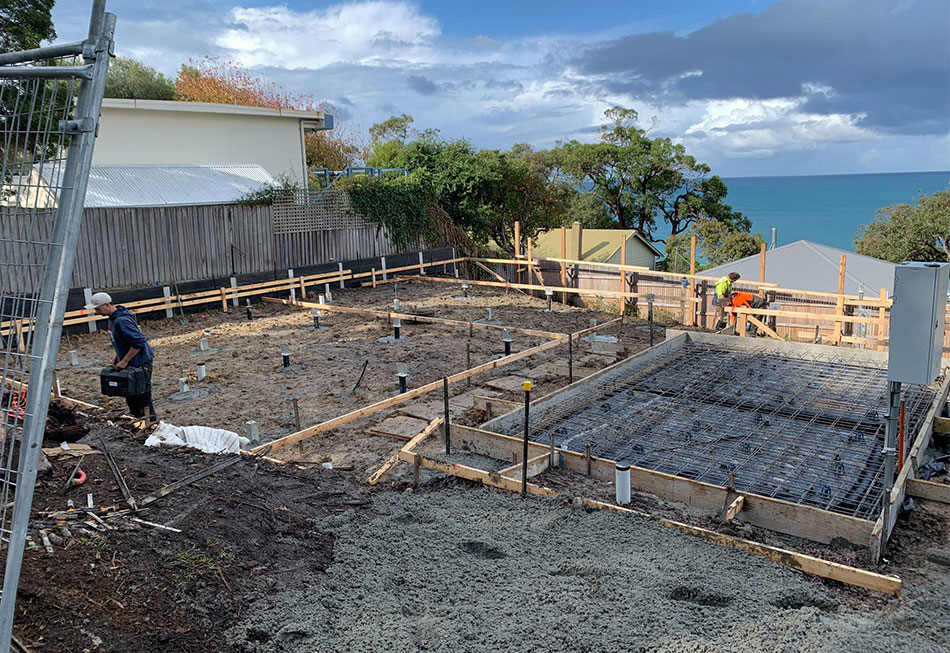



Different House Slab Types For Building Homes In Geelong Torquay
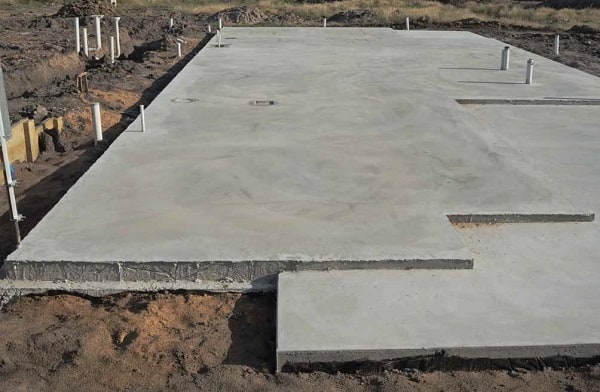



Reactive Soil A Slab Of Confusion Building Connection
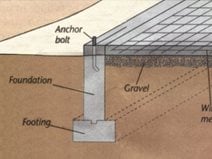



Concrete Foundation Three Types Of Concrete Foundations The Concrete Network
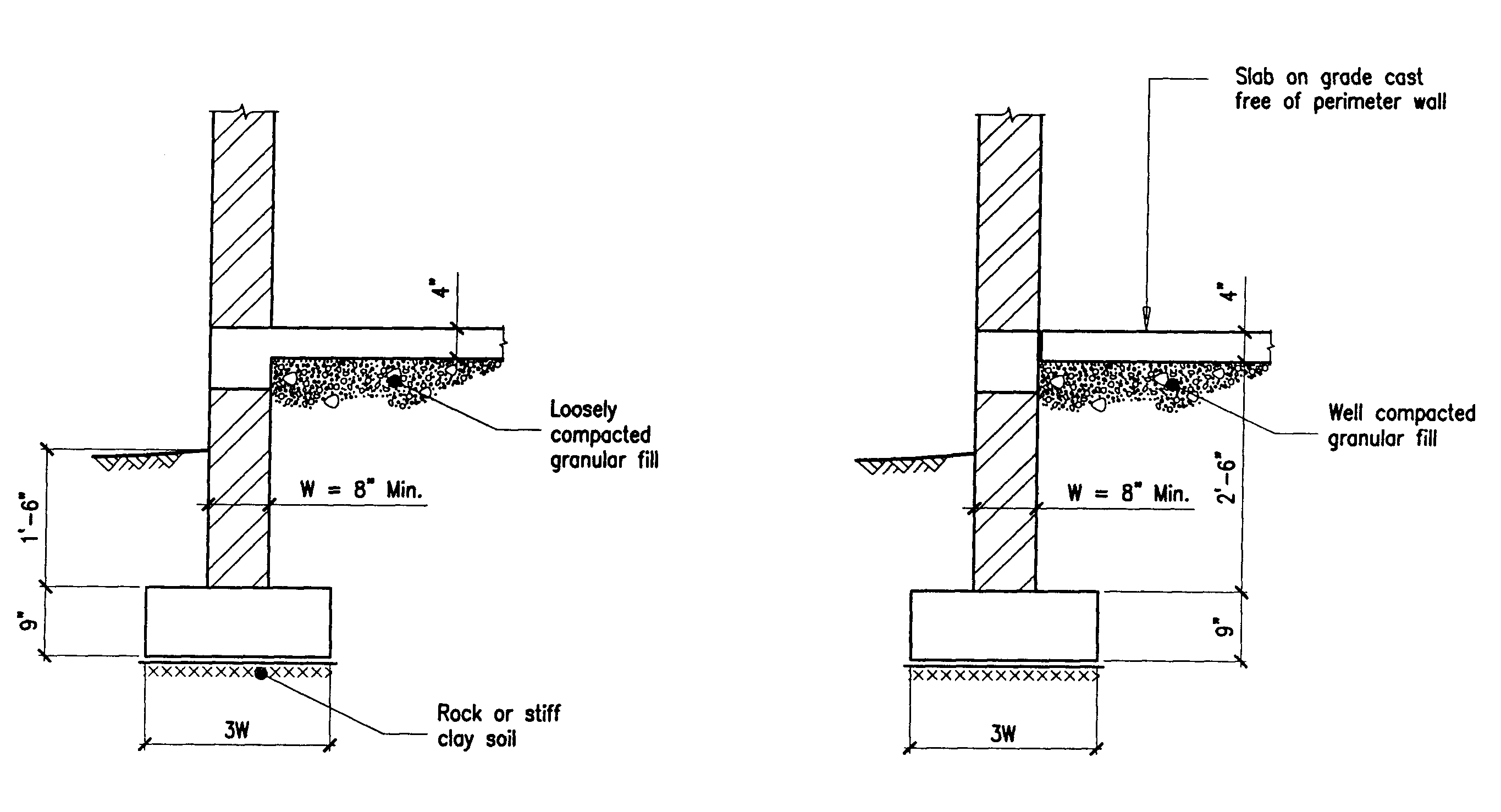



Building Guidelines Drawings Section B Concrete Construction




27 Basic Carpentry Tools Ideas Basic Carpentry Tools Carpentry Tools Home Construction
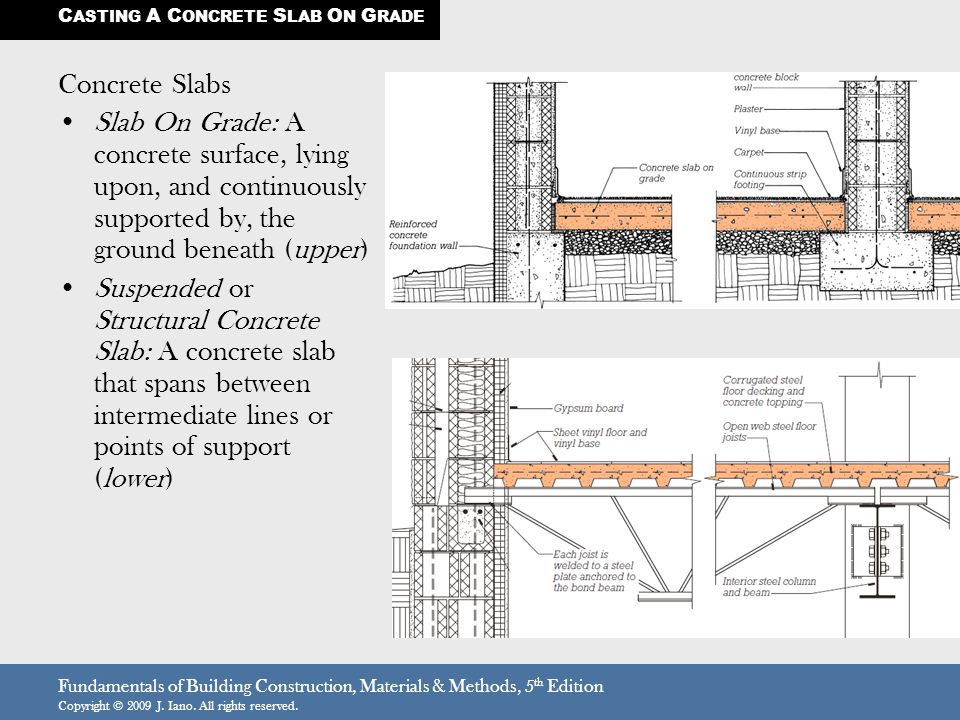



Casting A Concrete Slab On Grade Ppt Download




Non Suspended Slab Non Suspended Slab الهندسة والمعلومات Facebook




What Is Grade Slab And What Is The Difference Between Grade Slab And Ordinary Slab Quora
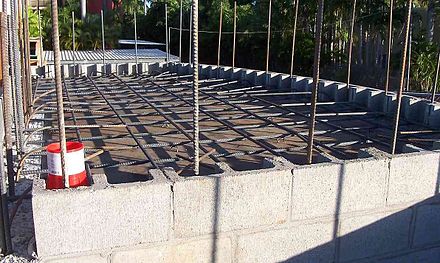



Concrete Slab Wikiwand



Www Phrc Psu Edu Assets Docs Webinars Slabinsulation Pdf




2 C What Is A Slab What Are The Functions And Types Of Slabs




Builder S Engineer Design Of Foundations At Pile Head




Locrete Palestine Mr Fahim Kasis Managing Director Locrete Industries Ppt Download




Basement Walls With Slab On Grade 2 Pad Footings The Pad Foundation Download Scientific Diagram



Slab On Grade Foundation Design Slab On Grade Design
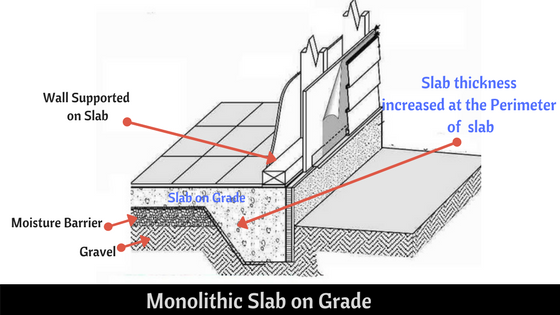



Slab On Grade Or Grade Slab Types Construction Procedure
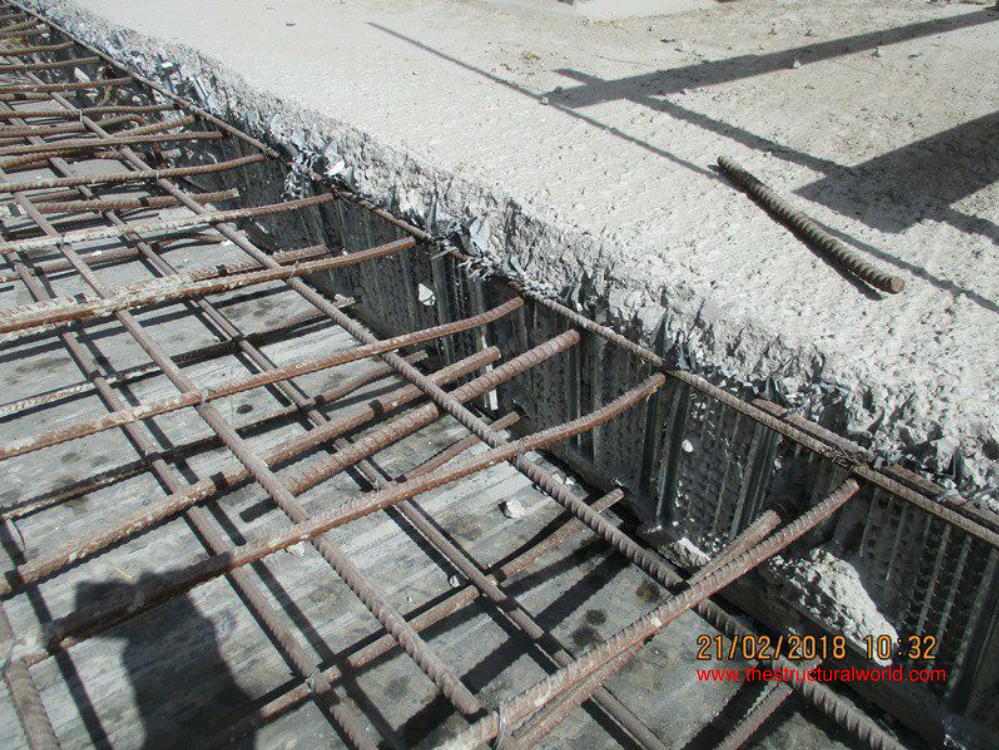



Construction Joint In Slabs The Structural World




How Thin Is Too Thin Evaluating Slab Thickness In Reinforced Concrete Flat Plate Construction Construction Specifier
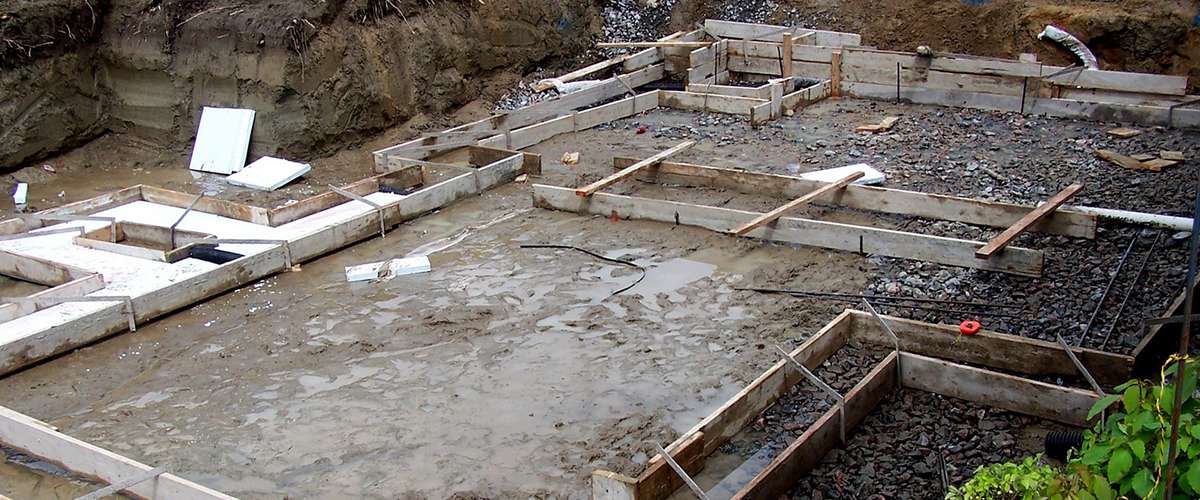



Slab On Grade Vs Foundation Crawlspace Or Basement Ecohome




Slab On Grade Versus Framed Slab Journal Of Architectural Engineering Vol 16 No 4




19 Different Types Of Slabs In Construction What Is A Slab




Should You Build With A Pier And Beam Foundation Pros Cons



Www Concrete Org Portals 0 Files Pdf 302 1r 15 Chapter5 Pdf




Ground Slabs Introduction




5 Things To Look For When Inspecting A Suspended Concrete Slab
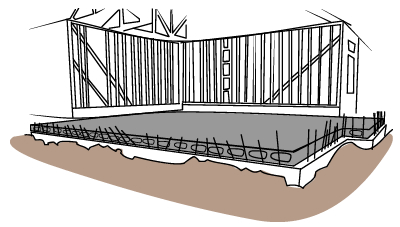



Suspended Slab Subfloor Build




Concrete Vs Timber Floors
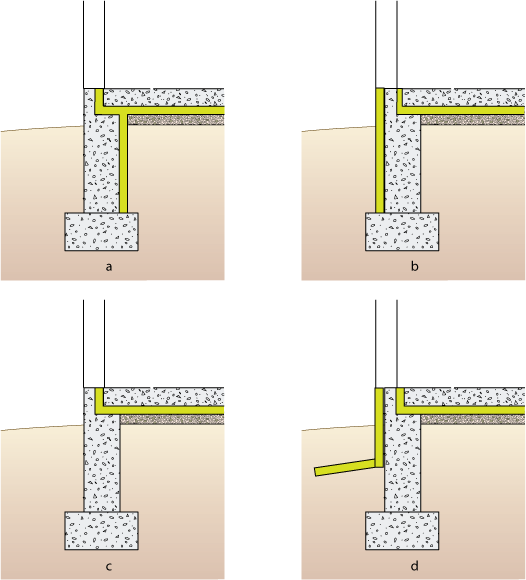



Doe Building Foundations Section 4 1
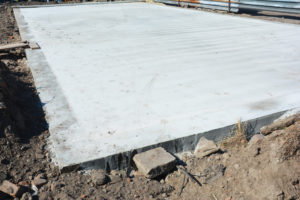



What Is A Slab On Grade Foundation Engineered Solutions




5 Types Of Concrete Slabs Construction Uses



1




Slab On Grade Versus Framed Slab Journal Of Architectural Engineering Vol 16 No 4




Builder S Engineer Design Example Piled Ground Beams With Suspended Slab
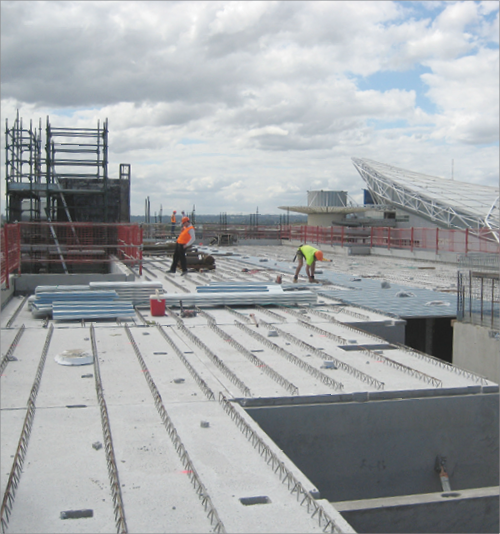



Concrete Slab Floors Yourhome
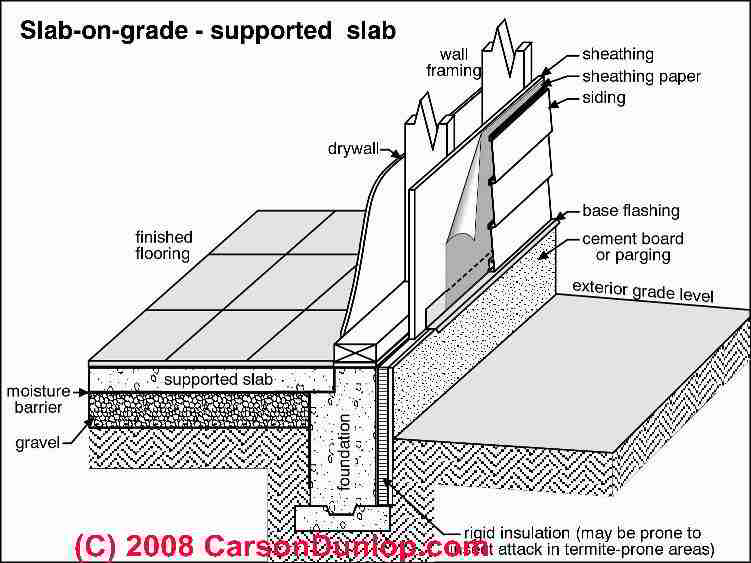



How To Evaluate Cracks In Poured Concrete Slabs
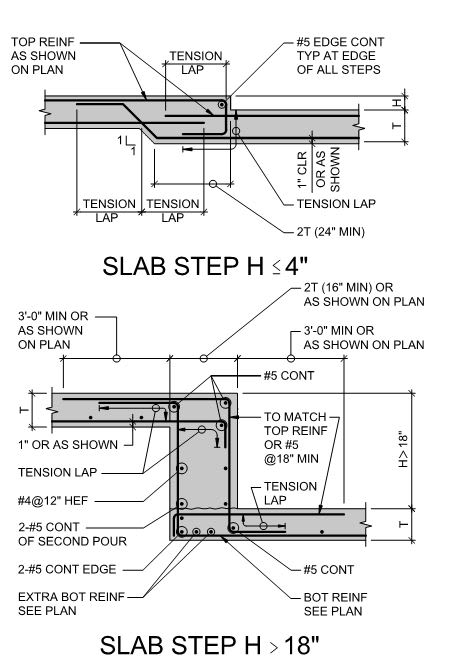



Sunken Slab Detailing Structural Engineering General Discussion Eng Tips




What Is The Difference Between Slab On Grade And Raft Foundations Quora




Concrete Floor Problems Building Science Corporation




Slab On Grade Versus Framed Slab Journal Of Architectural Engineering Vol 16 No 4




Suspended Floors All You Need To Know Thermohouse



Measurement Of Concrete Works




Concrete Vs Timber Floors




Structural Design Of Ribbed Slabs Structville




The Challenge With Slab On Grade Get The Most Out Of Your Gpr Data Gssi Geophysical Survey Systems Inc




Suspended Slabs
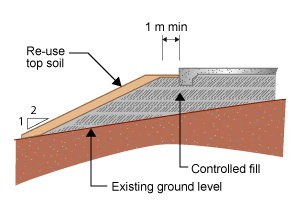



Slabs On Fill




5 Types Of Concrete Slabs Construction Uses




Floor Slab An Overview Sciencedirect Topics




Beware Waffle Slabs Structural Engineers




Slab On Grade Versus Framed Slab Journal Of Architectural Engineering Vol 16 No 4



Inspecting And Testing Subfloors Measuring Moisture And Ph In Situ Probe Test




Floating Slab Vs Monolithic Slab What Is Monolithic Slab What Is Floating Slab
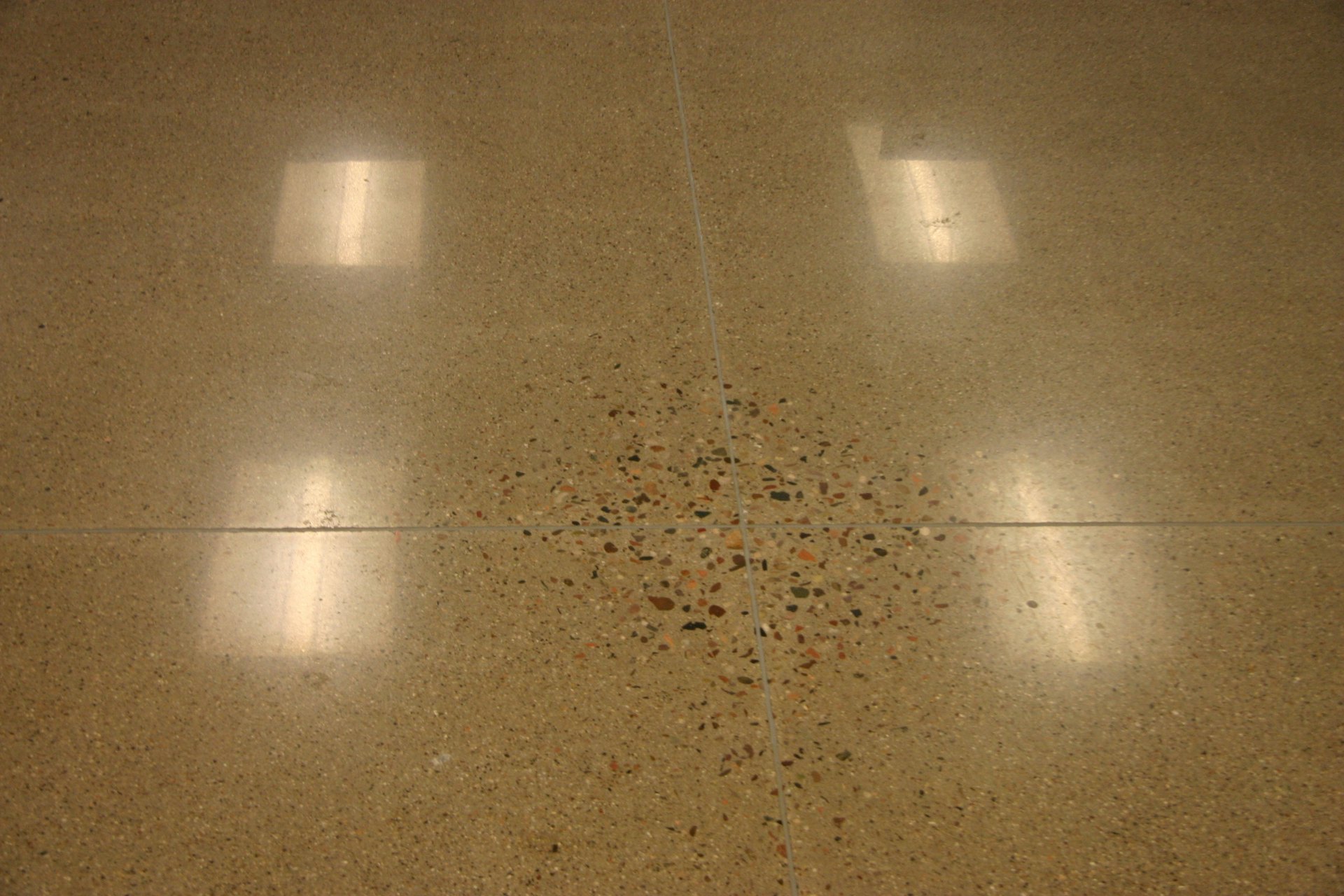



Why Polishing Suspended Concrete Slabs Is More Likely To Disappoint Customers For Construction Pros




One Way Slab Design Procedure With Example Design Of One Way Slab




Insulation Retrofit For An Existing Concrete Slab And 2x4 Walls Greenbuildingadvisor
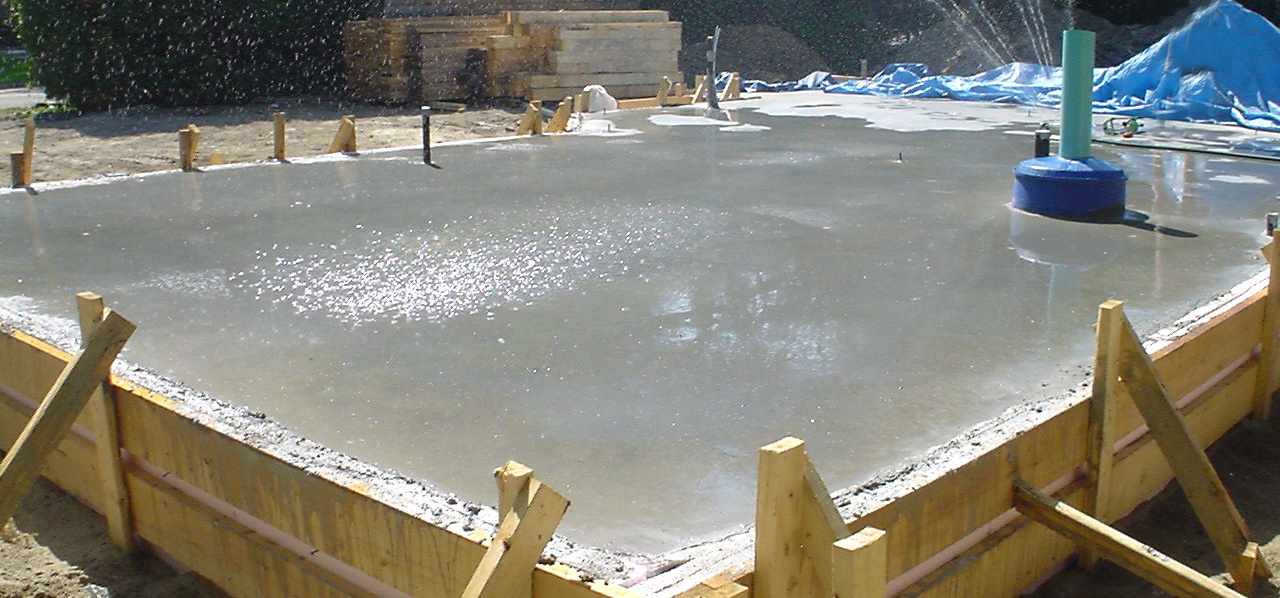



Slab On Grade Foundation Detail Insulation Building Guide Ecohome




Construction Joint In Slabs The Structural World




What Is Floating Slab Floating Slab Construction How To Build A Floating Slab Advantages Disadvantages Floating Slabs
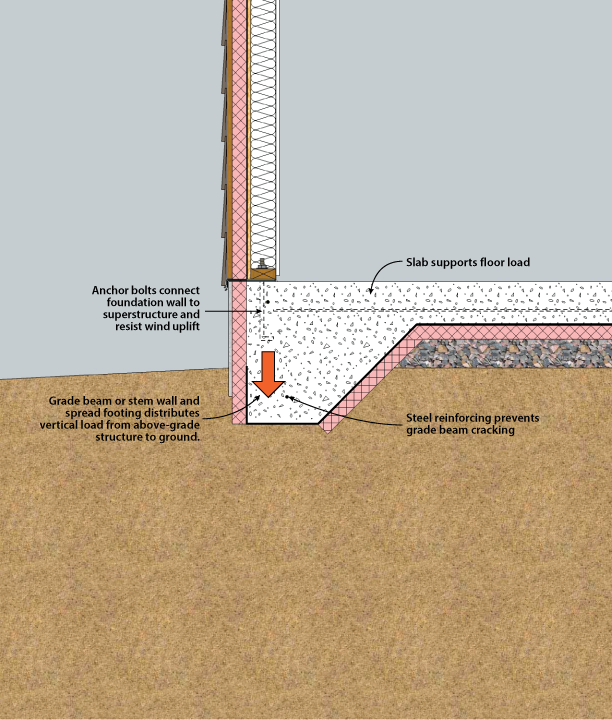



Doe Building Foundations Section 4 1




Method Statement For Construction Method Statement Non Suspended Slab




Slab On Grade Versus Framed Slab Journal Of Architectural Engineering Vol 16 No 4




Floating Slab Vs Monolithic Slab What Is Monolithic Slab What Is Floating Slab



3




8 Portfolio Architectural Ideas Service Design Industrial Buildings Line Drawing




Non Suspended Slab Non Suspended Slab الهندسة والمعلومات Facebook




Basement Walls With Slab On Grade 2 Pad Footings The Pad Foundation Download Scientific Diagram


